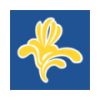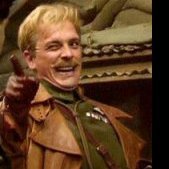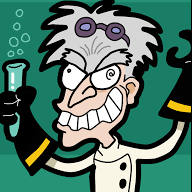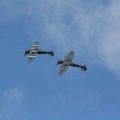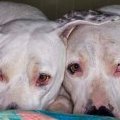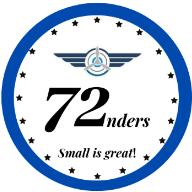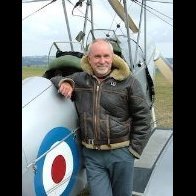Search the Community
Showing results for tags 'Wildcat'.
-
As promised on another thread, This will be the AH1 version. Still early stages yet but the build is well under way now, Combination of styrene sheet build with ply / balsa, some vac-forming of parts and some fibre-glassing of parts. DSCF4064 by Mark Stevens, on Flickr DSCF4066 by Mark Stevens, on Flickr DSCF4069 by Mark Stevens, on Flickr Mark
- 66 replies
-
- 13
-

-
Source: https://www.facebook.com/ArmaHobby/posts/4494536197243369 Update http://armahobbynews.pl/en/blog/2021/08/13/f4f-4-wildcat-1-72-test-shots/ V.P.
- 39 replies
-
- 5
-

-
- Arma Hobby
- F4F
-
(and 1 more)
Tagged with:
-
In 2022 catalogue, Academy is to release a new tool 1/48th Grumman F4F-4 Wildcat - Battle of Midway - kit - ref. 12355 Despite rumours It won't be a rebox from the future Eduard F4F kits family (thread), dixit words from M. Vladimir Šulc, boss from Eduard–Model Accesorries ltd., as from M. Gustav Jung, boss from Wolfpack Design, who's close ties with Academy Hobby Model Kits - see here: link Source: https://www.facebook.com/photo?fbid=4666693050091873&set=pcb.4666695563424955 V.P.
-
Eduard is to release 1/48th Grumman F4F Wildcat kits: F4F-3 through F4F-4, FM-1 and FM-2 to Martlets. Sources: https://www.modelforum.cz/viewtopic.php?f=1&t=95280&start=33705#p2449036 https://www.modelforum.cz/viewtopic.php?f=1&t=95280&start=33720#p2449051 https://www.modelforum.cz/viewtopic.php?f=1&t=95280&start=33765#p2449103 V.P.
- 100 replies
-
- 16
-

-

-
FM-1 Upgrade Sets (for Tamiya) 1:48 Eduard Brassin Tamiya’s Wildcat range in 1:48 was broadened last year by the addition of the British operated FM-1 Martlet, operated by the Royal Navy in large numbers under the Lend/Lease agreement. Now we have some after market parts to increase the level of detail in quick, easy ways that won’t break the bank. As usual with Eduard's smaller Brassin sets, they arrive in a flat resealable package similar to their PE sets but with different branding, with a white backing card protecting the contents and the instructions that are sandwiched between. Bulkier small parts are further protected by being shut inside a low-profile crystal clear clamshell box inside the packaging, the parts prevented from rattling around by a small sticky patch in the centre of the box. Some of the sets are all directly 3D printed parts, and they are attached to their print-bases by many fine fingers that taper at the top end to reduce clean-up once you have liberated the part(s) from the base. A little light sanding is usually sufficient to make any marks disappear, after which you can start putting parts together. FM-1 Exhausts PRINT (6481015) Consisting of two angled hollow exhausts, these ultra-fine parts should be a drop-in replacement for the kit parts, with much more finesse than their styrene equivalents. FM-1 Wheels (6481016) Containing two traditional resin wheels, two 3D printed spoked hubs, two flat PE hubs, and a sheet of kabuki-style masking material that is pre-cut to simplify painting immensely, you can choose to use either style hub, cutting the wheels from their casting block that is located on the contact patch, where you will find a slight flattening of the tyre under the weight of the airframe. They are drop-in replacements, and packed with detail. FM-1 Seat PRINT (6481017) This set contains a 3D printed seat and a set of STEEL Photo-Etch (PE) belts that are nickel-plated and pre-painted to give your model realism. The seat is a drop-in replacement for the kit part, and the belts are easy to mould to the shape of the seat pan to give a realistic drape, thanks to the thinner, more flexible metal they are printed upon. Conclusion The great thing about these sets is that you can pick and choose what you want to focus on, they’re not going to blow your budget, and the detail is exquisite. Highly recommended. Review sample courtesy of
-
Hi folks,third and final build for this GB is an early version of the Wildcat in a late 30's yellow wings scheme fits in nicely with the other two builds. picked up for a tenner today.
-
Hello, Finally, I managed to finish Wildcat from Tamiya in marking from Guadalcanal. It was quite ok build, Tamiya kit has some years but still good in details. I used Gunze H and AK RC colours and Tamiya varnishes. I struggled with signs and numbers decals on fuselage and I rather used homemade masks. Weathering is done by Abteilung 502 oil paints and chalks. I hope you’ll like it. Petr
-
Hi all, I wish everybody a happy new year for a starter I am proud to present to you almost freshly finished Wildcat from Eduard. this is the only build to have been carried to an end this year for multiple reasons (like... life!) but I for sure enjoyed every minutes of it. Let it be noted that 2023 was the year of the arrivals of babies in my household but also of me setting up my workshop in our house after a 6 year hyatus. All I can conclude so far is that my eagerness to build models is back and even bigger than when i put it aside. here comes pics of the said model from which you can find more "in progress" pics here : I won't say it is perfect, quite far from it even, but I reached a satisfactory point where I dont feel like picking it up from the shelf to do more on it. I would greatly appreciate any comment or improvement idea since I used plenty of new-to-me products (AK paints, AK weathering washes, AK pencils,...) since many items did not like being stored for an extended period of time. next to come will be a bf-109 in its winter coat as a step toward italian camouflage
-
This build was completed yesterday. It was done OOB, with the addition of Eduard seatbelts. Paint is Vallejo Model Air, applied over a black base mottled with gray shades. I bought the Arma Hobby FM-2 "Training Cats" edition, initially with the intention of using some aftermarket decals to build a deployed, combat area aircraft. I decided against that, and set about building a "Training Cat." Deciding which one to replicate proved very difficult! Ultimately, I chose to replicate LS03, unit unknown. The mix of the Atlantic camo scheme with a mismatched cowl grabbed my attention. The build was a pleasant experience, and assembly went very smoothly. Thankfully, I researched the kit and read about a build technique that greatly simplified assembly of the landing gear. This would have been very difficult just going off the instructions. I noticed the landing gear, as supplied, seemed to be missing a strut on each side. I cut some styrene rod and added them- 5th photo, circled in red. The cockpit was washed with Flory grime wash, and the wear was done with Vallejo Metal Color dull aluminum applied with a sponge. The exterior weathering was done with Flory washes, oils, and Tamiya Weathering Master. I tried a new (for me) airbrush technique for the exhaust staining. I built up a layer of "engine soot", followed by thinned NATO black, and finished with a thinned mixture of a grayish tan color I made by mixing Light Gull Gray and "yellow sand". I included a photo of the actual aircraft at the end. If anyone knows anything more about this aircraft, such as where it was stationed, I would like to hear about it. Thanks for looking, and feedback is always appreciated.
- 10 replies
-
- 37
-

-
- Arma Hobby
- Wildcat
-
(and 1 more)
Tagged with:
-
F4F-4 Gun Bays (648853 for Eduard) 1:48 Eduard Brassin We’ve reviewed the superb new tool F4F-4 Wildcat from Eduard recently here, and I’ve even built one of the earlier F4F-3s here, so can testify to its excellence as a model kit. Just when you thought you could get your wallet back out safely, along comes another 3D printed resin set that will blow your socks off, if you’re even bothering wearing them any more due to the number of times they keep getting removed by each release. As good as the base kit is, you can always increase the level of detail over and above what’s achievable using injection moulded styrene, and this set proves that without question. As is now usual with Eduard's larger resin sets, it arrives in a shallow Brassin cardboard box, with the resin parts safely cocooned in bags, and with the thick instructions folded around acting as padding. The parts are printed resin rather than the usual poured cast resin, so are attached to their print-bases via thin tendril-like fingers that are easy to cut off and sand the little pip-like marks away, leaving them ready for action. There are two bags of 3D printed resin parts and one containing a large fret of Photo-Etch (PE) brass, and you’ll need to do a little simple surgery to the wing parts of your kit, excising the bay cover panels, plus opening up the shell-ejection chutes and narrow access panels from the lower wings before you start. There is also a 1:1 template for you to mark out the interior of the upper wing so that you can thin the styrene by 0.6mm in preparation, which will have the positive side-effect of making the edges of the open bays a more realistic thickness, as well as shortening the spar to accommodate the bays. Each bay is built in mirror image, starting with the main body of the double inner bay, which has two small PE parts fitted into in the wall. The two resin guns are inserted barrel first through the holes in the front of the bay, gluing the breeches to the bay floor via slots and tabs. The ammo feeds are then laid over the tops of their location, followed by the ammo boxes from underneath later in the build. The process is repeated in a simplified fashion for the outer bay, which holds the extra machine gun that was added to improve firepower, with the moulded-in ammo feed disappearing downward. A link between the inner and outer bay is first fixed to the inner where the ammo boxes fit, then the outer bay is joined, with another area for the ammo that feeds the outer gun. The extended bay can then be inserted between the wing halves and everything glued in place, closing the wing around the bays, then adding the lip around both sides using the PE framing parts. The PE bay covers have another layer added to the centre, leaving the edges thinner, and looking like they should fit into the open bays. These are either laid on or near the aircraft, or folded forward non the top surface. This is by nature of the additional .50cal guns a more involved set than the early mark, but the instructions give the impression that lessons have been learned in simplifying the process. Conclusion The detail on these sets is phenomenal, and if you’re not wedded to having all your models buttoned up and ready for flight, they add tons of visual interest to your model. Highly recommended. Review sample courtesy of
-
A couple of months ago I was driving across Bodmin Moor on the A30 when I noticed a Wildcat sitting in a field next to a layby on the opposite carriageway. With no alternative but to carry on to the next junction I returned to the layby but the Wildcat had departed. There were a couple of Military vehicles parked in the layby and they didn't move so I decided to stay for a bit. During the next half hour the Wildcat retuned 3 more times to collect troops. Later that afternoon I was on the return leg of my original journey and the trucks were still there so I parked up and waited a bit. I was just about to give up and go home when without any warning (no distant wokka sound) a Chinook suddenly appeared from a valley, it can't have been more than 50 feet high when it appeared from the gap , even the troops in the trucks were caught by surprise and had to do some running. I hadn't noticed the squad of troops scattered around the gorse waiting to be picked up by the Chinook which returned for a couple more pick ups. By now a bit of an audience had turned up with a few drivers pulling in to have a look, including one unhappy woman who screeched to a halt and started moaning at me about the horses on her farm being spooked by the helicopter, not sure what she expected me to do about it🙄.
-
Hi all here I present to you my first full build of 2023 It’s finished as F4F-3 (1850) 41-F-4 flown by Lt. Charles Shileds of VF-41 USS Ranger in December 1940 At the beginning of January I was undecided on what to build next so I asked my wife to pick a kit from me stash and to choose the markings! And my wife picked the Eduard F4F-3 Wildcat and chose the early pre-war markings i started this by the end of the first week of January. The only issues I had with the kit was the rather fiddly undercarriage I don’t know if it was something i did or something to do with the kit parts but I had a major misalignment problem later on in the build one wingtip was a good 4mm higher than the other and that’s when I noticed the misalignment of the undercarriage although everything was glued to where it should be so I had to shorten one of the undercarriage legs to get it to sit horizontally! Question I don’t know whether to give it a wash to accentuate the panel lines and rivets if so can any recommend what to use ? Paints used were mainly from the MR Hobby Aqueous and Mr.Metalcolor ranges and some tamiya acrylics the decals are of the new type from Eduard and I bit the bullet in peeling the carrier film off and I must say It went better than expected with the decals only lifting in a couple of areas. I throughly enjoyed this build from start to finish despite the aforementioned issues hope you like it and thanks for looking happy modelling
- 21 replies
-
- 55
-

-

-
F4F-3 Cockpit w/Telescopic Gunsight (648765 for Eduard) 1:48 Eduard Brassin But wait… there’s more! More aftermarket for the new tool Wildcat from Eduard, and this is the second wave of aftermarket sets that they have released for those that want to increase the level of detail over and above what’s achievable using injection moulded styrene. As is now usual with Eduard's larger resin sets, they arrive in a deep Brassin cardboard box, with the resin parts safely cocooned in bags, and the instructions folded around acting as padding. This set will please those that want to model an earlier Wildcat with the simple telescopic sight that was fitted to the first aircraft off the production line. There are three Ziploc bags within the box, two containing directly 3D printed parts, the other containing a fret of nickel-plated pre-painted Photo-Etch (PE), and a small decal sheet, both protected by a small sheet of white card. On emptying the parts out of the bag, the first thing you notice is the sheer level of detail present, but also the relatively small parts count thanks to the capabilities of 3D printers, where supports are all that is required to protect overhangs, and there is no degrading of mould fidelity over time because there are no moulds to wear out. The short parts list is also evident immediately on viewing the instructions, which begin with an ostensibly complete aft cockpit assembly, to which you add the seat with painted PE lap belts only for the initial batch of airframes. The control column slips into a deep recess in the gaiter, some half-moon levers are added at the sides of the pilot, then the forward bulkhead with integral tank, plus a separate head cushion are mated to the cockpit. The side consoles are slotted between the two bulkheads with detailed painting guide and decal placement instructions to complete those, then a little wire from your own stocks is threaded through sections of the cockpit, and the kit bulkhead is brought in from behind. The beautifully detailed rudder pedals are a single part that is truly amazing to behold, and it too has its own painting instructions and two decals for the centre of the piece. The kit insert to the tank is slotted into the 3D printed part to complete it, and then you have a choice of how to complete the instrument panel, using a blank panel with two-layer PE dial sections plus some tiny levers, or a detailed printed panel to which you add a decal, or if you’re very brave, paint fully yourself. The small angled coaming with separate tubular gunsight is glued to the top of the coaming to finish off. The cockpit can then be inserted into the fuselage as per the kit instructions, but with a small resin part fixed to the starboard interior, and a pair of tiny pegs are removed from the styrene part. If you are a little anxious about removing the 3D printed parts from their printing bases, and having to deal with all those tendril-like fingers that hold them in place and support them during printing and curing, fret not. As it was the first time I had dealt with a completely 3D printed cockpit from Eduard, I took the precaution of removing the parts from their bases of the previously reviewed later cockpit and preparing them for assembly as part of my build. It didn’t take me long, as I used the new CMK Razor Saw set we reviewed a wee while ago here. I used the square blade chucked all the way over on the fine-toothed blade side, and once I’d cut the attachment points, I snapped off the fingers so I could work on the next side easily. Some parts you can just saw at the base of the supports, but it gets messy and you can’t quite see what you’re cutting. Here’s a quick pic of the mess I was making during the removal process, remembering it isn’t this set, but one very similar: After a little sanding of the forest of tiny ‘pimples’ that were left under parts and the more delicate parts being trimmed by a new #11 blade, the results were very pleasing. There are detailed painting and decaling instructions given throughout the leaflet, in Eduard’s usual Gunze Aqueous and lacquer ranges, using H and C codes respectively. Very highly recommended. Review sample courtesy of
-
It is about time I started a WIP instead of looking, dreaming of building a model and picking on "Bill the Butcher" a.k.a Navy Bird. With all my banter about Bill's missfortune I went and stabbed myself with a knife and a lot of claret escaped, serves me right for being a dork. I am going to butcher AZmodels Grumman Martlet Mk.1/G.36. So let us have a look at the bits. I wanted to do a G.36 but found very few reference photos especially for the fuselage guns. Boxart Masks My start, No you won't find any blood on these bits it is on the wings and I wiped it off. The parts go together well so far although the engine placement seems to be a bit hairy. Thanks for looking. Stephen
-
Hello all, this is my latest completion, Arma Hobby's 1/72 F4F-4 Wildcat, built in the markings of John.L ."Smitty" Smith's aircraft, White 2 (Guadalcanal, 1943). This kit was the most complex one I've built yet, there were lots of small and thin parts for the internal structure and landing gear (which I broke by accident, but managed to fix by inserting a metal pin to reinforce it). The detail in the kit is great and the engine is fantastic. The model was painted with Ak real colors acrilycs; the decals used are the kits', though I modified the numbers because this scheme doesn't come in the box. The model was weathered with a silver pencil, tamiya weathering powders and tamiya enamel washes. The aftermakets used were eduard PE and brass tube for the gun barrels. The figure is from the CMK set, US Navy F6F Hellcat Pilot and Mechanic Hope you enjoy it! Oompa Loompa
-
F4F-3 Exhausts & F4F Gun Barrels (648766 & 648769 for Eduard) 1:48 Eduard Brassin We’ve just reviewed the super new tool Wildcat from Eduard, and this is one of the many aftermarket sets that they have released at the same time for those that want to increase the level of detail over and above what’s achievable using injection moulded styrene. Although the sets arrive in a flat package, the directly 3D printed parts are safe inside a clear plastic clamshell box inside the package, which also has a sticky pad inside to prevent the parts from rattling about. The parts are printed resin, attached to the base via thin tendril-like fingers that are easy to cut off and sand the little upstands away, leaving them ready for action. F4F-3 Exhausts PRINT (648766) The sticky pad in this set holds two exhausts on its print base, which have super detail and are totally hollow, with crisp detail around the lip and along the weld-lines. There is a tab to fix the parts to the kit in a drop-in manner, once they have been prepared and painted appropriately. F4F Gun barrels PRINT (648769) Although the very early Wildcats only had four .50cal machine guns, later output had their armament increased to six, although with no extra bullets in the magazines, doubtless leading to some frantic clicking and the lucky escape of a Zero on occasion. This set contains six barrels with hollow muzzles and recesses to depict the holes in the cooling jacket all over the sides of the tubes. Once removed from the base, they’re a simple drop-in replacement, and although tiny, the detail is exceptional, just like the exhausts above. I couldn’t resist cutting one free just to see if the hole went all the way through. It didn’t, but it looks deep enough for our needs. Highly recommended. Review sample courtesy of
-
F4F-3 Wheels Early & Late (648767 & 648768 for Eduard) 1:48 Eduard Brassin We’ve just reviewed the super new tool F4F-3 Wildcat from Eduard, and this is one of the many aftermarket sets that they have released at the same time for those that want to increase the level of detail over and above what’s achievable using injection moulded styrene. As is now usual with Eduard's smaller resin sets, they arrive in a shallow Brassin cardboard box, with the resin parts safely cocooned in bags, and the instructions folded around acting as padding. F4F-3 Wheels Early (648767) This set includes two main wheels with cast-in hubs in grey resin, and three choices of tail wheels, their fairings and yokes. There is also a sheet of pre-cut yellow kabuki-style masking material (not pictured) included along with the instructions to allow you to cut the demarcation between wheels and tyres cleanly, and with little effort. Once removed from their casting blocks the wheels are all drop-in replacements for the kit parts, and each has a slight weighting moulded into the bottom of the tyre to simulate the pressure of the aircraft. F4F-3 Wheels Late (648768) This set is slightly different, as in addition to the two main wheels and three tail wheels in resin, there are also two insanely delicate-looking spoked hubs that have been 3D printed and are safely ensconced inside a clear clamshell box with a sticky pad, plus a small fret of Photo-Etch (PE) containing two flat hubs in the same bag as the masking material. You choose whether to use the spoked hubs or the flat ones during the build, but it would be a real shame not to use the spoked hubs as they’re so attractive. Again, all wheels have a flat-spot on their bases to simulate weight. Highly recommended. Review sample courtesy of
-
F4F Undercarriage BRONZE (648779 for Eduard) 1:48 Eduard Brassin We’ve just reviewed the super new tool Wildcat from Eduard, and this is one of the many aftermarket sets that they have released at the same time for those that want to increase the level of detail over and above what’s achievable using injection moulded styrene. As is now usual with Eduard's smaller resin sets, they arrive in a shallow Brassin cardboard box, with the resin parts safely cocooned in bags, and the instructions folded around acting as padding. This set enhances the styrene landing gear with metal main struts and 3D printed resin supports on one side, utilising some of the kit parts for the other side. In the box are a pair of cast bronze main struts, which need very little in the way of preparation, just removing the sprue clipping point from the upper tubular section, which is best done with a motor tool and abrasive disc, taking your time so the part doesn’t overheat and you don't go past the moulded-in limit (you can just see this in the pic above). With that done, the resin parts are removed from their printing bases and glued in place in the same manner as the original kit parts. The other side of the support is taken from the kit, using parts L1 and L2, as well as the lower supports from the kit, which are parts L6 and L7. The main benefit of the bronze is strength, but the included 3D printed centreline gear bay doors are a big improvement on the kit parts and are printed as single parts with no fiddly gluing of small bits together. Very highly recommended. Review sample courtesy of
-
F4F-3 Cockpit w/Reflector Gunsight PRINT (648777 for Eduard) 1:48 Eduard Brassin We’ve just reviewed the super new tool Wildcat from Eduard, and this is one of the many aftermarket sets that they have released at the same time for those that want to increase the level of detail over and above what’s achievable using injection moulded styrene. As is now usual with Eduard's larger resin sets, they arrive in a deep Brassin cardboard box, with the resin parts safely cocooned in bags, and the instructions folded around acting as padding. There are three Ziploc bags within the box, two containing directly 3D printed parts, the other containing a fret of nickel-plated pre-painted Photo-Etch (PE), a tiny slip of acetate and a small decal sheet, both protected by a small sheet of white card. On emptying the parts out of the bag, the first thing you notice is the sheer level of detail present, but also the relatively small parts count thanks to the capabilities of 3D printers, where supports are all that is required to protect overhangs, and there is no degrading of mould fidelity over time because there are no moulds to wear out. The short parts list is also evident immediately on viewing the instructions, which begin with an ostensibly complete aft cockpit assembly, to which you add the seat with either painted PE lap belts only for the initial batch, or a full set of four-point belts for later production. The control column slips into a deep recess in the gaiter, some half-moon levers are added at the sides of the pilot, then the forward bulkhead with integral tank, plus a separate head cushion are mated to the cockpit. The side consoles are slotted between the two bulkheads with detailed painting guide and decal placement instructions complete those, then a little wire from your own stocks is threaded through sections of the cockpit, and the kit bulkhead is brought in from behind. The beautifully detailed rudder pedals are a single part that is truly amazing to behold, and it too has its own painting instructions and two decals for the centre of the piece. The kit insert to the tank is slotted into the 3D printed part to complete it, and then you have a choice of how to complete the instrument panel, using a blank panel with two-layer PE dial sections plus some tiny levers, or a detailed printed panel to which you add a decal, or if you’re very brave, paint fully yourself. The small angled coaming with moulded-in reflector gunsight is added atop the panel that is locked in on two pegs, and a tiny piece of acetate sheet is glued to the top of the sight to finish off. The cockpit can then be inserted into the fuselage as per the kit instructions, but with a small resin part fixed to the starboard interior, and a pair of tiny pegs are removed from the styrene part. If you are a little anxious about removing the 3D printed parts from their printing bases, and having to deal with all those tendril-like fingers that hold them in place and support them during printing and curing, fret not. As this is the first time I have dealt with a completely 3D printed cockpit from Eduard, I took the precaution of removing the parts from their bases and preparing them as if for assembly. It didn’t take me long, as I used the new CMK Razor Saw set we reviewed a wee while ago here. I used the square blade chucked all the way over on the fine-toothed blade side, and once I’d cut the attachment points, I snapped off the fingers so I could work on the next side easily. Some parts you can just saw at the base of the supports, but it gets messy and you can’t quite see what you’re cutting. Here’s a quick pic of the mess I was making during the removal process: After a little sanding of the forest of tiny ‘pimples’ that were left under parts and the more delicate parts being trimmed by a new #11 blade, the results were very pleasing, as you can see below: There are detailed painting and decaling instructions given throughout the leaflet, in Eduard’s usual Gunze Aqueous and lacquer ranges, using H and C codes respectively. Very highly recommended. Review sample courtesy of
-
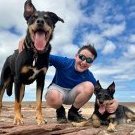
F4F Seat PRINT (672291 for Arma Hobby) 1:72
Mike posted a topic in Aftermarket (updates/conversions)
F4F Seat PRINT (672291 for Arma Hobby) 1:72 Eduard Brassin Although this set arrives in a flat package, the directly 3D printed parts are safe inside a clear plastic clamshell box inside the package, which also has a sticky pad inside to prevent the parts from rattling about. This set has onew printed resin seat on its own print platform, with the parts attached to the base via thin tendril-like fingers that are easy to cut off and sand the little upstands away, leaving the parts ready for action. There is also a small fret of STEEL Photo-Etch (PE) that are also pre-printed with seatbelt parts, which includes four belts and a single comfort-pad for underneath the buckle. Once removed from the print-base, the seat is a drop-in replacement, and after painting it should be draped with the seatbelts, the shoulder straps in a single Y-shape that is folded over the rear of the seat-back, while the lap belts are attached to the sides of the seat and folded over as if the pilot has just left his cockpit. Detail is fabulous as you’d imagine from 3D Printed resin and PE, which should be easy enough to add some extra detail to your Arma Wildcat. Highly recommended. Review sample courtesy of -
Hello forum, About to start on my next 1/72 Airfix Dogfight Double Midway F4F-4 following my Fw-190/Hawker Typhoon build linked below. Given Johnny's @The Spadgent's build of the same kit, along with Detail and Scale's review, I am looking forward to a straight forward where effort will be spent on the engine, wheel well intercoolers, Photo etch cockpit & working on getting the colors correct. @giemme's builds always inspire me to push on some of the overlooked details on excellent kits like Airfix's F4F-4. Unlike Johnny, I am going to do this with the wing's extended. For reference, I am using @Dana Bell's F4F Wildcat, Aircraft Pictorial #4 book, Detail and Scale's F4F Wildcat (E-Book), Detail and Scale's US Navy Carrier Based Aircraft of WW2 (e-book), WW2 In Review No 30 Wildcat (e-book), F4F Wildcat vs Zero Sen (Edward M Young-e-book) and this website I found useful https://www.angelfire.com/dc/jinxx1/Wildcat/F4F_pt1.html . Given the overall quality of Airfix's decals and research on previous Dogfight Double's I have built, I decided to build LCDR Thatch's aircraft with their markings. Additionally, I noted in Airfix's instructions that Starfighter decals assisted with developing the markings so I feel good about their accuracy--I have always been impressed with their products. About the only error I can find, and it seems to be common with all Airfix Wildcats, is most F4F-4's carried Curtiss Electric propellors and not Hamilton Standards, so the propellor stencils will need to be modified. In this scale I have decided to just use the technical stencils on the cuff & cut off the red Hamilton Standard oval--I purchased Yellow Wing's 1/72 manufacturer propellor logos so I might use the Curtiss Electric Seal--that said, I think photographic evidence in @Dana Bell's book points to no manufacturer seals on Midway Wildcat propellors. I have read that Thatch's aircraft is pictured below prior to the Battle of Midway--a great resource that I will use on the build. My 1st order of business is to figure out what colors to use for the project. I initially purchased Colorcoates as I trust their research and have heard nothing but good things about them. However, since I plan on thinning the paints I like to use the manufacturer's proprietary so I can save unused paints/avoid complications--it has been next to impossible for me to get their thinner, so I decided to use the lids as paint chips to compare other manufactures against. (I am very impressed with the research put into Colorcoates and will use them in the future when I get thinner--I also understand they paint the lids with the actual color in the tin). I decided to give AK Real Colors a try based off one of @billn53's builds, Gunze, AK Acrylic (Bronze Green) and Tamiya (experiment with XF-5 for cockpit bronze green only) and Vallejo (cockpit bronze green). A quick eyeball check against Colorcoats and @Dana Bell's book convinced me to use AK Real Colors Bronze green for the cockpit. I am thinking that AK's Blue Grey and Light Grey will work for the exterior, but I am still going back and forth with Gunze's near matches--I know this is very unscientific eyeballing, but I think it will hit the mark. For the elusive Grumman Grey Primer, I am going to trust at Eduard's Hellcat instructions juxtaposed with Detail and Scale's Hellcat book and go with Mission Model's Light Gull Grey. Paint swatches I created against light grey are pictured below: All comments are welcome--including those that think my color interpretation needs improvement. Also, please do not hesitate to add to my Wildcat knowledge if my research is off--I am always amazed at the bench of historical and craftsman knowledge on this site. Best to all, Erwin
-
F4F-4 Wildcat (70048) 1:72 ARMA Hobby Grumman began development work on a new fighter in the mid 1930. Originally the new aircraft was outpaced by the Brewster Buffalo and Grumman resigned their aircraft to carry a supercharged version of the Pratt & Whitney R-1830 "Twin Wasp" radial engine. Original orders from France were delivered to the British Royal Navy after France fell. The RN designated the aircraft the Marlet. The US Navy would then adopt the type in late 1941. Originally armed with 4 0.50 cal machine guns the F4F-4 was introduced in 1941 with 6 of these guns. The aircraft also featured a wing fold system to allow more aircraft to be on a carrier. Even though the armament was increased to 6 gun the ammuntion capacity was not, thus actually giving pilots less firing time which was disliked. The extra weight from the guns and wing fold also reduced performance. The Kit This is a new tool kit from ARMA Hobby which seems to have garnered good reviews. This kit is the same plastic as the Expert kit we reviewed here, except this kit comes without the photoetch and masks of that kit. The kit arrives on a main plastic sprue, a clear sprue, and decals. The moulds are crisp with what feels like the right level of detailing and recessed panel lines for this scale. Construction starts with the cockpit. The instrument panel is attached to the front bulkhead (instruments being provided as decals). The rudder pedals then fit to the back of this bulkhead and it can be attached to the cockpit floor. The seat can then be attached to the read cockpit bulkhead. with decals seatbelts provided. The rear bulkhead can then be attached to the cockpit floor. Side parts then join the front and rear bulkheads. The cockpit can then be added to the right fuselage. The front bulkhead for the landing gear area can now be added in front of the cockpit. The internal parts of the gear mechanism can then go in. We then follow this up with assembling the engine and it's bearers as this goes onto the front side of the gear bulkhead. twin banks of cylinders have their parts added, the gearbox then fits to the front. At the rear the mounts and exhausts go on along with the oil tank and oil coolers. Once the bearers are on the fuselage can be closed up and the engine mounted to the front. The engine cowls can then be added. This is split in half with a front ring, with different ones being provided for one of the decal options. The propeller can then be fitted. Now the tailplanes and rudder can be fitted along with tail wheel. The wings can now be fitted, these are conventional left/right with uppers and lowers. If using the drop tanks you will need to open up the holes for these. Once the wings are one the complicated landing gear itself needs to be built up. Arma provide a frame to align some of the parts or this. The ear can then be added to the fuselage and the wheels added. Some nav lights will need to be removed from the kit for this boxing and then wing lights and pitot tubes added. Bomb racks and the drop tanks go on if you are using them. Lastly the canopies and top aerial are fitted. Markings There are printed by Techmod so should pose no problems. only 2 marking option are provided for the kit in this boxing; VMF-111 Western Samoa, Spring 1941 VF-11 Sundowners, Henderson Field, Guadalcanal 1943. Conclusion It is great to see this important aircraft being kitted by a new manufacturer. The kit seems to have been very well received by modellers. Very Highly recommended. Review sample courtesy of
-
Although having been building models for many years this is my first since joining the BM forum so I hope this overview is of interest to like minded Fleet Air Arm enthusiasts. The kit is the vintage Tamiya GRUMMAN F4F-4 WILDCAT from the early 1990s. To my mind it still stands up well to more modern versions even though the rear fuselage rivet detail is rather heavy. I had no problem putting it together and only complicated things for myself by deciding to include the AIRES wing fold conversion. This is cast resin and very finely detailed but extremely delicate and I managed to damage some of the components whilst cleaning up the castings. Thinning down the wing sections to accept the cast parts was a chore but I think worth the effort. The only other issue was that I like to have canopies open, particularly when we spend so much time and effort on the cockpit interiors. The kit transparency is too thick to slide aft of the cockpit so I reduced the fuselage spine a little to allow it to sit down in a more realistic fashion. This butchery can't be seen once the canopy is in place. So there it is, my first BM post. I'm now rummaging in the stash to decide on the next project. Thanks for looking. Ian
- 14 replies
-
- 37
-

-
So this is my first attempt at putting some words and pictures together regarding my latest build. The model is the TAMIYA 1/48 scale Grumman F4F-4. I decided to build a Royal Navy WILDCAT V and chose JV394 of 842 sqn using decals from Eagle Strike. I like to have folded wings on my carrier borne aircraft and so also have a resin conversion kit from AIRES. Main components laid out ready for next stage.
- 17 replies
-
- 11
-

-
FM-1 & FM-2 Wildcat (70050) 1:72 ARMA Hobby Delux Set Grumman began development work on a new fighter in the mid 1930. Originally the new aircraft was outpaced by the Brewster Buffalo and Grumman resigned their aircraft to carry a supercharged version of the Pratt & Whitney R-1830 "Twin Wasp" radial engine. Original orders from France were delivered to the British Royal Navy after France fell. The RN designated the aircraft the Marlet. The US Navy would then adopt the type in late 1941. Originally armed with 4 0.50 cal machine guns the F4F-4 was introduced in 1941 with 6 of these guns. The aircraft also featured a wing fold system to allow more aircraft to be on a carrier. Even though the armament was increased to 6 gun the ammuntion capacity was not, thus actually giving pilots less firing time which was disliked. The extra weight from the guns and wing fold also reduced performance. While Grumman's Wildcat production ceased in 1943 to make way for the Hellcat General Motors continued to produce the Wildcat. Even though technically obsolete by this point it was still a useful aircraft for the smaller escort carriers. The FM-1 was identical to the F4F-4 but the number of guns was reduced to the original 4 with provision being made for bomb racks, or rockets to be fitted. The FM-2 was an improved airframe with a more powerful engine, and increased rudder area to compensate for the extra torque. The Kits These are new tool kits from ARMA Hobby. There is a common smaller sprue with different main sprues for the 2 versions. The kits will also need some modifications by the modeller to accurately reflect the airframes. As well as 2 lots of kis there is an additional PE sprue in this double boxing. An additional bonus in this boxing are two laser cut wooden decks. The moulds are crisp with what feels like the right level of detailing and recessed panel lines for this scale. FM-1 Construction starts with the cockpit. The instrument panel is attached to the front bulkhead (instruments being provided as decals, behind a PE part). The rudder pedals then fit to the back of this bulkhead and it can be attached to the cockpit floor. The seat can then be attached to the read cockpit bulkhead. PE with decals seatbelts are provided. The rear bulkhead can then be attached to the cockpit floor. Side parts then join the front and rear bulkheads. The cockpit can then be added to the right fuselage. The front bulkhead for the landing gear area can now be added in front of the cockpit with PE details for the gear retraction mechanism going in. The internal parts of the gear mechanism can then go in. We then follow this up with assembling the engine and it's bearers as this goes onto the front side of the gear bulkhead. twin banks of cylinders have their parts added along with a PE wiring harness, the gearbox then fits to the front. At the rear the mounts and exhausts go on along with the oil tank and oil coolers. Once the bearers are on the fuselage can be closed up and the engine mounted to the front. The engine cowls can then be added. This is split in half with a front ring, with different ones being provided for one of the decal options. The propeller can then be fitted. Now the tailplanes and rudder can be fitted along with tail wheel. The wings can now be fitted, these are conventional left/right with uppers and lowers. If using the drop tanks you will need to open up the holes for these. Once the wings are one the complicated landing gear itself needs to be built up. Arma provide a frame to alight some of the parts or this. The ear can then be added to the fuselage and the wheels added. Some nav lights will need to be removed from the kit for this boxing and then wing lights and pitot tubes added. Bomb racks and the drop tanks go on if you are using them. Lastly the canopies and top aerial are fitted. FM-2 Construction starts with the cockpit. The instrument panel is attached to the front bulkhead (instruments being provided as decals, behind a PE part). The rudder pedals then fit to the back of this bulkhead and it can be attached to the cockpit floor. The seat can then be attached to the read cockpit bulkhead. PE with decals seatbelts are provided. The rear bulkhead can then be attached to the cockpit floor. Side parts then join the front and rear bulkheads. The cockpit can then be added to the right fuselage. The front bulkhead for the landing gear area can now be added in front of the cockpit with PE details for the gear retraction mechanism going in. The internal parts of the gear mechanism can then go in. We then follow this up with assembling the engine and it's bearers as this goes onto the front side of the gear bulkhead. the cylinders are added along with push rods, the gearbox then fits to the front. At the rear the mounts and exhausts go on along with the oil tank and oil coolers. Once the bearers are on the fuselage can be closed up and the engine mounted to the front. The engine cowls can then be added. This is split in half with a front ring. The propeller can then be fitted. Now the tailplanes and rudder can be fitted along with tail wheel. The wings can now be fitted, these are conventional left/right with uppers and lowers. If using the drop tanks, and rockets you will need to open up the holes for these. Once the wings are one the complicated landing gear itself needs to be built up. Arma provide a frame to alight some of the parts or this. The ear can then be added to the fuselage and the wheels added. Some nav lights will need to be removed from the kit for this boxing and then wing lights and pitot tubes added. Bomb racks, rockets and the drop tanks go on if you are using them. Lastly the canopies and top aerial are fitted. Markings There are printed by Techmod so should pose no problems. 4 marking option are provided for each of the kits, FM-1 A32/S31 VC-33 USS Nassau, Sept 1943. Wildcat V JV579/F "That Old Thing" 846 Sqn FAA, HMS Trumpeter (invasion stripes as providing anti-submarine cover over the landings) FM-1 No.7, VC-6, USS Core, Dec 1943 North Atlantic. Wildcat V, JV439/C9-N, 733 Sqn FAA, Tricomalee Airfield, Ceylon 1945. FM-2 No.8 "Hot Lips", VC-99, USS Hoggatt Bay, Pacific Theatre 1945 FM-2 No.D6, "Judy", VC-14, USS Hoggatt Bay, The Philippines 1944 FM-2 No.4 VC-13, USS Tropoli Atlantic Ocean March 1944 Wildcat VI JV752/320-9 AAEE Boscomble Down Feb 1945 Carrier Decks Two deck sections typical of a US Escort carrier are provided in the box in laser etched wood. Conclusion It is great to see a double boxing of this excellent kit now being offered with the bonus inclusion of the carrier deck sections. Very Highly recommended. Review sample courtesy of


